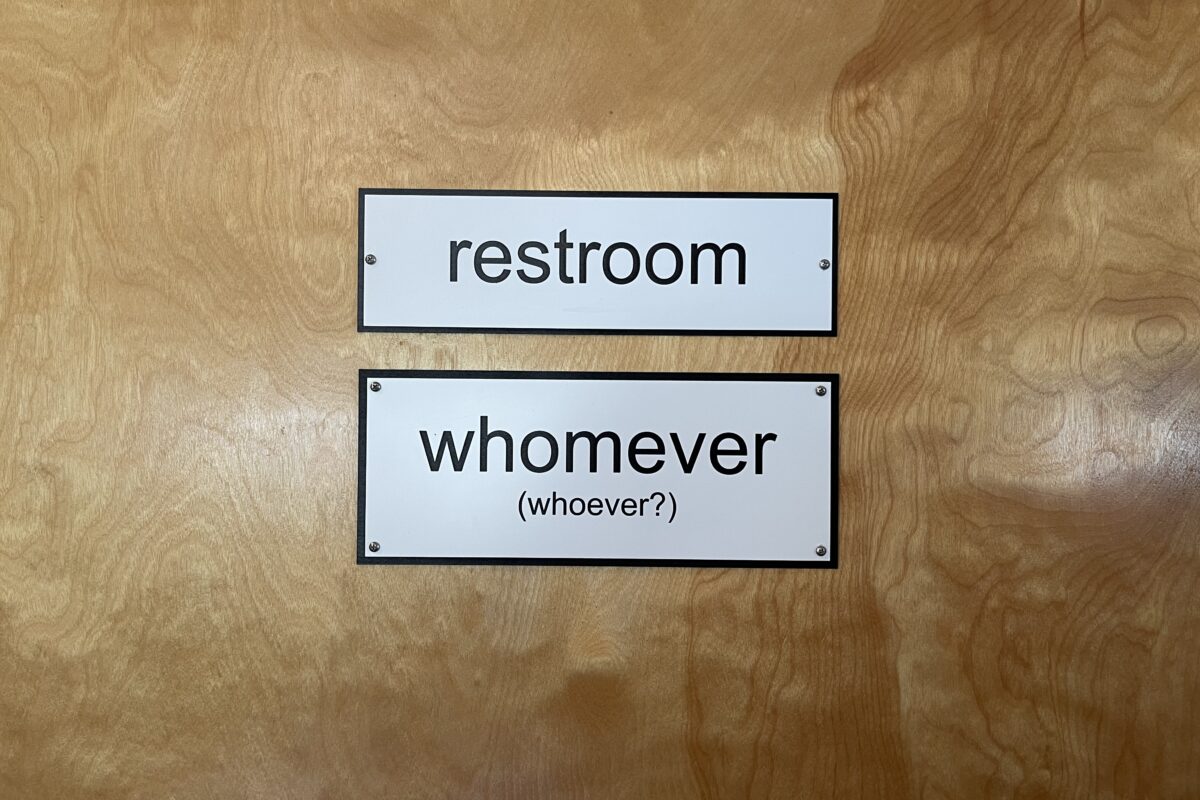Whom is dying out … mostly. As an essential part of grammatical English, that stuffy, old-fashioned object pronoun is declining in usage, and has been for more than a century. As a stylistic marker, though, it has some life left.
That’s the conclusion of the latest research from linguists Lars Hinrichs and Axel Bohmann, conducted in collaboration with Axel’s brother Martin, a physicist. Their work is available online in the journal Frontiers and as a stand-alone website, and it paints a more complicated picture of the path whom has taken over the last few centuries than even they expected.
“The big finding from our work is that if whom had continued to drop as quickly as it started dropping 100 years ago, it would be gone by now. But it didn’t,” said Hinrichs, an associate professor of linguistics in the Department of English at The University of Texas at Austin. “So, why is it staying? Because it’s changed from a regularly used pronoun to a stylistic marker.”
That shift from grammatically necessary use to purely stylistic use is an example of what Hinrichs and Bohmann, an assistant professor of English linguistics at the University of Freiburg in Germany, are calling “de-grammaticalization.”
“The grammatical regularity of whom is weakening over time as it becomes optional in many contexts where it used to be mandatory, and that is a bit unusual,” explained Bohmann. “It’s also showing up in contexts where it’s technically not correct, like ‘Whom do you think is next on the list?’ But the loss of grammatical regularity creates room for stylistic meaning. Whom is shifting from having this grammatical function to having this social, stylistic function.”
That stylistic function can include things like memes — both Hinrichs and Axel describe jokes on social media that involve increasingly elaborate made-up whom-ish words, such as “whomst’dve” — as well as more benign uses, like making a magazine article sound more formal.
Their findings about the changing usage of whom is part of a larger project, sponsored by the Volkswagen Foundation, that focused on statistically modeling changes in language over time. The research was conducted using the Corpus of Historical American English, or COHA, which contains written English works published between the 1820s and 2010s. With the aid of specialized software, the linguists tracked 150 different features across 116,000 COHA text samples and compiled the results into a single spreadsheet. That data was then used to produce multi-dimensional statistics — the kind, Hinrichs said, “that we needed a physicist to help with” — that allowed the researchers to measure the spread, or decline, of numerous linguistic phenomena, including the use of whom.
While the fate of one pronoun may not seem like a big deal, Hinrichs sees the decline of whom as part of a much larger process of change. English grammar is becoming less complex, and the decline of whom is just one highly visible sign of that larger shift.
“It’s a small example of how English has always been less morphologically complex than any other European language, because English is such a contact language,” Hinrichs said. He places the start of that process all the way back in 1066 with the Norman Conquest of England, when the French occupied England for several hundred years and brought their language with them. As French became the language of government and the elites, English grammar began to simplify, losing many of the features of its linguistic parent, German.
“The distinction between the who form, which is the subject pronoun, and the whom form, which is the object pronoun, is such a pitiful remnant of the case system you have in German, where there are four cases,“ said Hinrichs. “But at least English had that case distinction in the pronoun system, and now that’s practically gone. So, you could look at the decline of whom as a completion of a movement that started in the Middle Ages.”
The process of simplification begins in spoken English — how often do you hear anyone say whom? — and then in written English. Now, in 2022, a process that began almost a thousand years ago is basically complete, and the grammatical use of whom is all but over. But don’t count it out yet. We still have memes, and “To Whom It May Concern,” and very formal writing where the little object pronoun gives a bit of polish. Whom may not be what it was, but it’s not truly gone, either.
